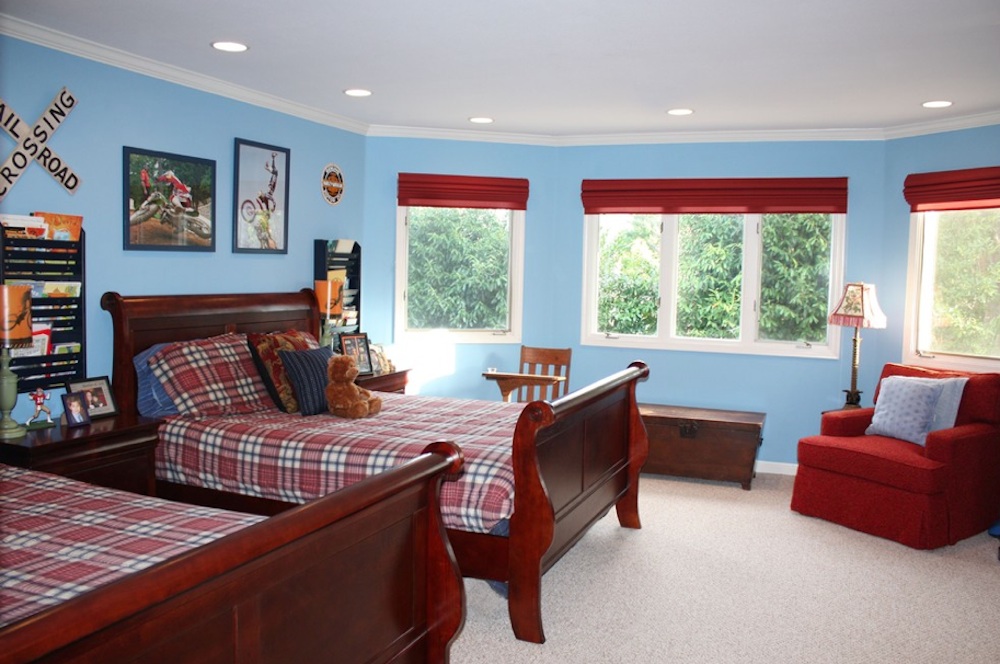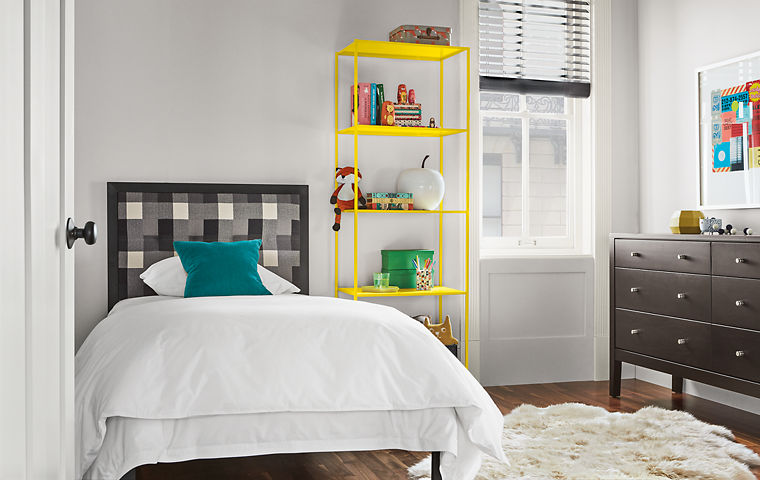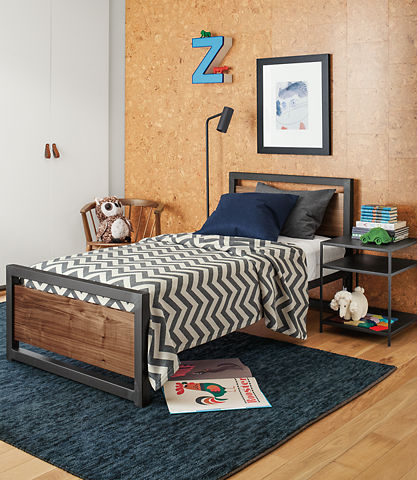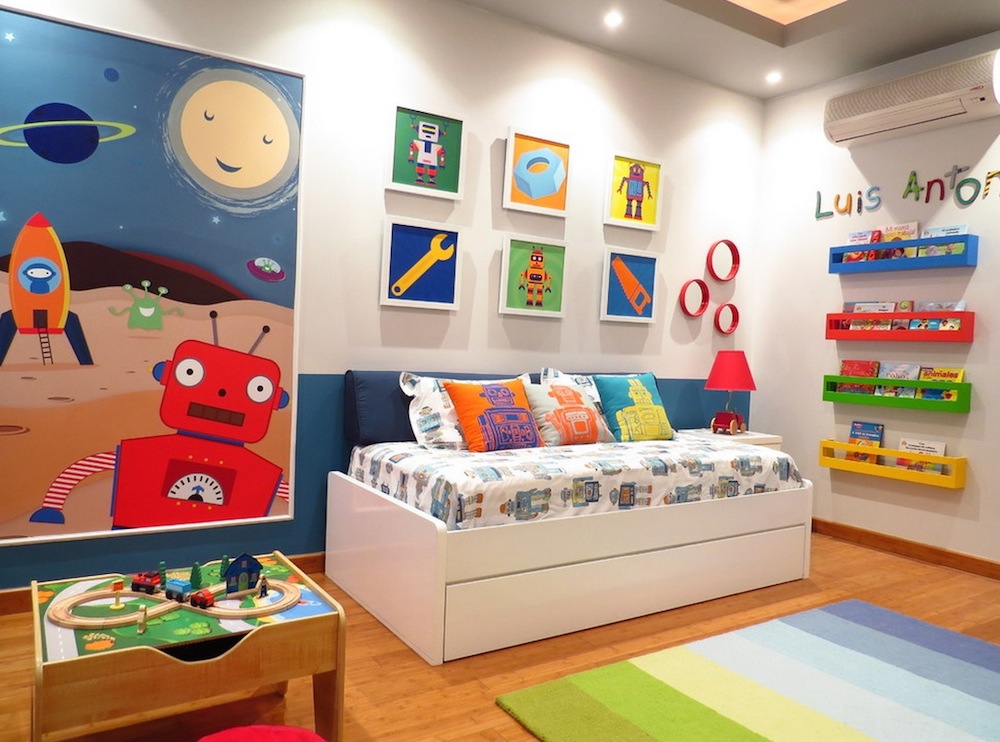A child who is truly at home in his house is likely to be much more pleasant inside kids room. The first step in making a home child-friendly is commonsense baby-proofing done by almost all parents. If something presents a hazard to the child, remove it or change it. Dangerous situations should not be object lessons or training grounds for obedience.
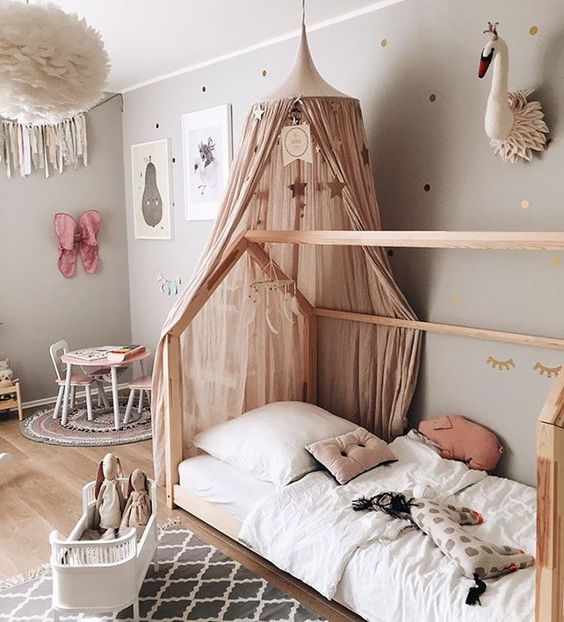
There are many benefits to an environment where children are welcome. Among them is the likelihood that the child who is free to explore in his home will become more alert, self-sufficient, and content to play alone with Mom nearby than a child who is confined to a playpen or walker to restrain him from the “adult house.” The former child gets support from his environment not frustrated by it. Kids room that looks beautiful but doesn’t take into account the demands of everyday family life will quickly be slain or end up like Grandma’s stuffy no-go zone. Instead, join a decorating style that will stand up to sibling food fights, vomiting babies, indoor hockey matches, incontinent pets and slobby spouses. Consider who you live with and decorate so.
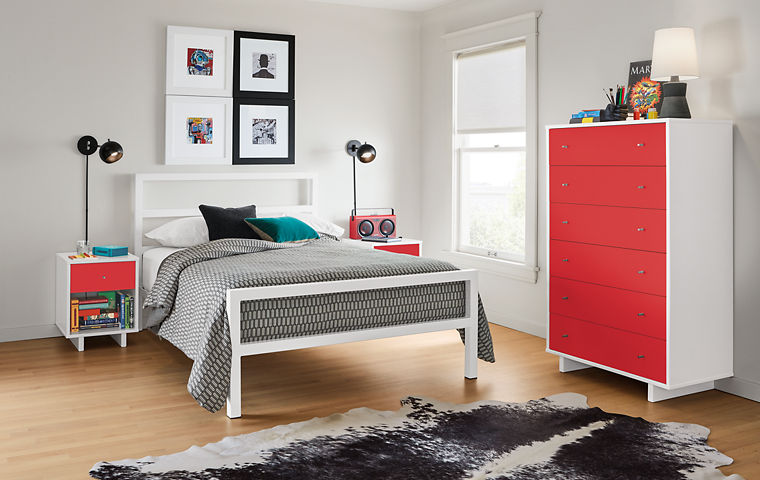
Hint: That means checking the color of the stains on your sofa before choosing a hue for the new one.
Many families hold off on decorating until their children are older, making do with ratty post-dorm furniture for years after its “expiration date” because, well, the kids will just destroy anything else. But even the youngest children benefit from living amid beautiful objects; they grow to appreciate and respect them.
So go ahead and create a home, the family can enjoy. You can even get kids involve in the process, asking what they’d like to see in a kids room you’re redecorating or letting them weigh in on a few prescreen paint colors or fabric samples. They may even feel enough ownership to think twice before kicking off their muddy boots on the rug they helped select.
If you have a toddler, sit on the floor at their height and then see the world around. Look for all sharp ends, corners, anything that can fall if pulled, and fragile objects. Your perspective on safety is about to change. And if you have kids, think of all objects that they will try to pull if they cannot reach. Visually check all breakable items even at a height as they may just play cricket in the home.
Here are some thumb rules to design safe Kids Room
- Your child grows faster than you blink. For example, a crib that will change to a sofa.
- When buying toy chests, avoid buying the ones with a vertically opening lid. The lid fall your child when he or she reaches inside to get a toy.
- Look for space use techniques. As your kid outgrows his crib, the next logical sleeping furniture is a bunk bed. It is perfect when sharing the kids room with other siblings or when optimizing bedroom space. Make sure it can resist your child’s weight so it cannot dislodge and let your child fall while sleeping. When lodging bunk bed make sure that there is no gap between the bed or bed frame and the wall.
- Make sure that the size of the mattress fits the structure of the bunk bed structures. A mattress that is too short will have a gap with the frame.
- Look for storage furniture (such as bookcases, cabinets, and chests of drawers) with a broad and stable base.
- Look at the furniture construction. Make sure it is sturdy, durable and rated to carry your child’s weight, size or age Test the furniture in the shop—e.g. pull out the top drawers of a chest of drawers and apply a little pressure to see how stable it is; make sure that the drawers do not fall out easily.
- Choose tables that will not tip if you sit on them or a child climbs on them (glass tables should be made of thick, toughened glass).
- Avoid furniture with rough or sharp edges. This is an obvious hazard to your child. If you cannot avoid such corner or edge guards from Home Store and install it before letting your child use the piece of furniture.
- There is a lot of furniture safety brackets available in the market. It is wise to invest in these. TV anchors, Furniture straps, Window Guardian Stopper, Toilet Locks, blunt corners and drawer locks are some of the examples.
- Kids are always curious. They have climb window ledges, pushed out window screens, and climbed over balcony railings. Placing furniture away from windows and balcony railings will help reduce the chance of your infant falling. Make sure to install window stops or guards on windows above the second stores.
- Always place cribs, beds and other furniture away from windows. Furniture or other objects on balconies should away from railings. Window guards act as a barrier, like a gate, in front of the window and can be found at hardware and specialty stores. They are available with both horizontal and vertical bars. Window stops are small devices that prevent a window from opening more than 10 cm (four inches), so that a child cannot fall out.
- Store poisonous rat or insect kills in a cabinet that is high up and using a lock or latch that cannot open by a child. Place all medications in a locked box and put it in a place that is high up and out of your child’s reach.
- Having some child-proof safety plugs are a must as this would mean that younger guests can’t stick their fingers into plug sockets and endanger themselves, giving parents that extra peace of mind.
